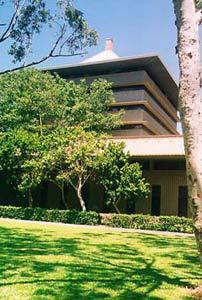Introduction
The University of Hawaii at Manoa (UHM) is the central campus in the University of Hawaii system. Manoa is a neighborhood of Honolulu, three miles east of downtown. The campus extends throughout the eastern half of the entrance to the greater Manoa Valley.
UHM was founded as a school of mechanical arts and agriculture in 1907. It has grown continually through the decades. Today, in any given year, the enrollment is over 20,000 students, with approximately ¾ of those in undergraduate programs and ¼ in graduate programs.
The school is the largest academic body in the Hawaiian islands and sets the tone for academia in the area. That tone is best summed up by the university’s seal, which depicts a book, Malamalalama (the light of knowledge) and a torch.


